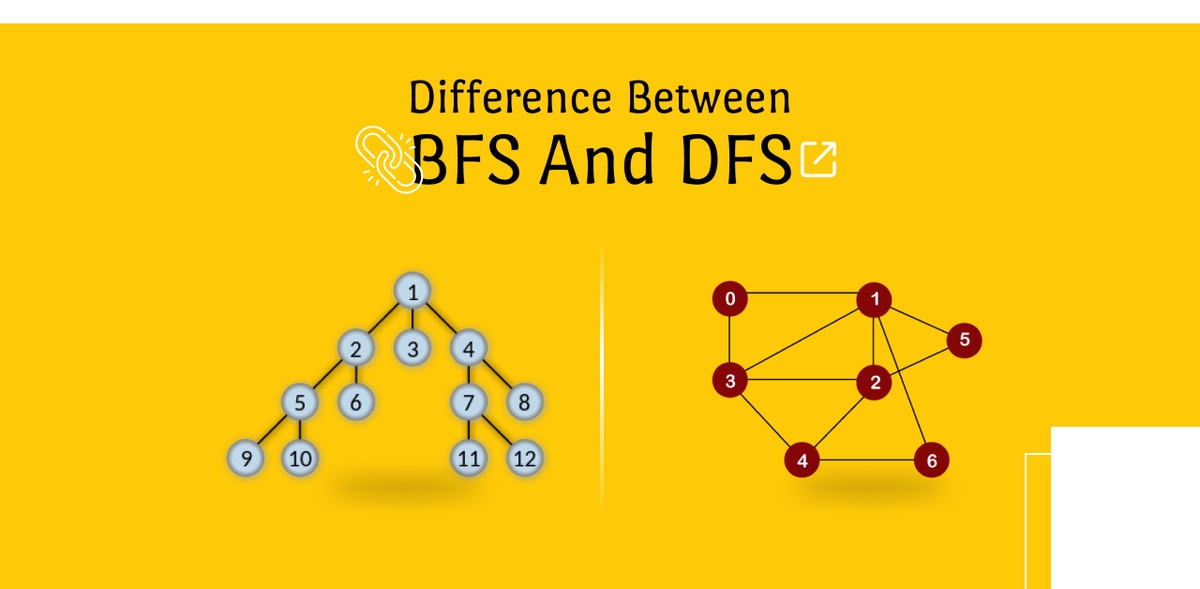Uncover the nuanced "Difference Between BFS and DFS." Dive into the depths of algorithms, exploring the contrasts in a comprehensive guide. Get ready to navigate the algorithmic seas with insights, FAQs, and expert perspectives.
Exploring the Depths: A Detailed Guide
Introduction
In the world of algorithms, Breadth-First Search (BFS) and Depth-First Search (DFS) stand out as fundamental traversal methods. Before diving into the distinctions, let's define these algorithms briefly.
Exploring BFS
Breadth-First Search Overview
BFS, like ripples in a pond, systematically explores the breadth of a graph. It's akin to a GPS navigating nearby locations, ensuring a step-by-step exploration.
BFS in Real-World Scenarios
In practical applications, BFS finds its place in social network friend recommendations, network broadcasting, and solving problems that demand the shortest path.
Contrasting DFS
Depth-First Search Unveiled
In contrast, Depth-First Search delves deep into a graph before backtracking. Imagine exploring a library, going deep into one section before moving on—a method efficient for tasks like maze-solving.
DFS Applications in Various Fields
DFS excels in topological sorting, maze-solving, and puzzle games, showcasing its adaptability across different domains.
Memory Consumption: A Dive Deeper
BFS Memory Usage
Due to its systematic approach, BFS tends to consume more memory as it stores nodes at the current level.
DFS Memory Efficiency
DFS, with its depth-first exploration, proves to be more memory-efficient, requiring storage only for the path from the root to the current node.
Efficiency in the Shortest Path
BFS: The Shortest Path Guarantee
BFS ensures the shortest path, making it suitable for scenarios where proximity matters, such as network navigation.
DFS: Deep Exploration Advantages
While not focused on finding the shortest path, DFS's deep exploration is advantageous in tasks like topological sorting and maze-solving.
Real-Life Applications
BFS in Social Networks
BFS mirrors social network recommendations, systematically exploring connections and ensuring efficient traversal.
DFS: Navigating Mazes and Puzzles
Imagine DFS as navigating a maze or solving a puzzle. Its deep exploration proves beneficial in scenarios demanding intricate pathways.
FAQ's: Navigating Common Questions
-
Overview of Common Questions
Let's address some common questions that unravel the nuances of BFS and DFS.
-
Can BFS Always Guarantee the Shortest Path?
Yes, BFS guarantees the shortest path, ensuring efficient exploration of nearby nodes.
-
Situations Favoring DFS
DFS is preferable for tasks like topological sorting and maze-solving, where deep exploration is advantageous.
-
Memory Usage Considerations
While BFS consumes more memory, DFS's efficiency lies in its ability to use less memory during traversal.
-
Real-Life Analogies for BFS and DFS
BFS is akin to GPS navigation, ensuring systematic exploration. DFS resembles exploring a library, going deep before moving on.
Conclusion: Embracing Algorithmic Complexity
Embrace the intricacies of BFS and DFS, wielding them as compasses through the algorithmic seas. Each algorithm offers a unique perspective, providing efficient solutions in different scenarios. Navigate with confidence, knowing the nuances that set BFS and DFS apart.


No comments yet